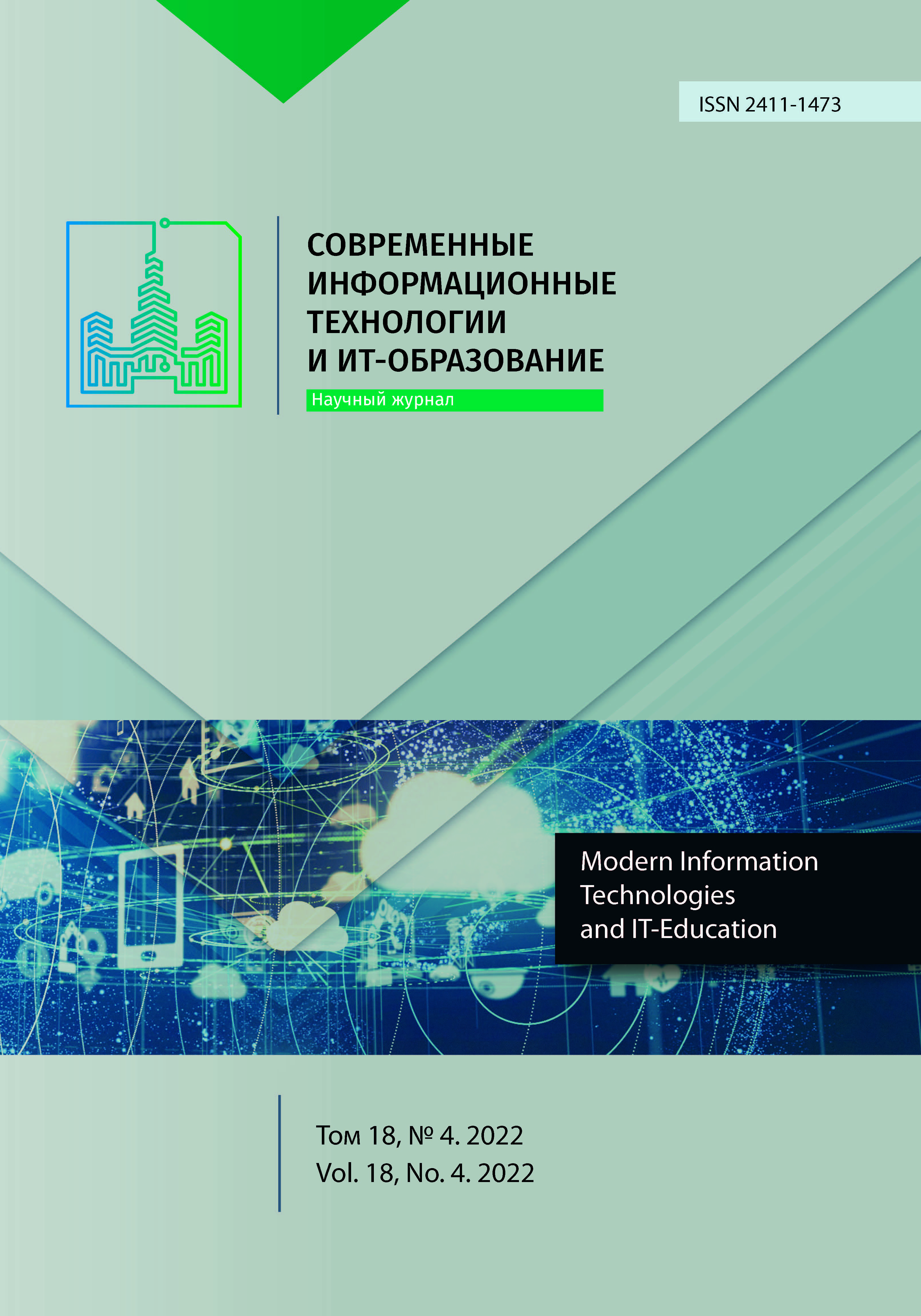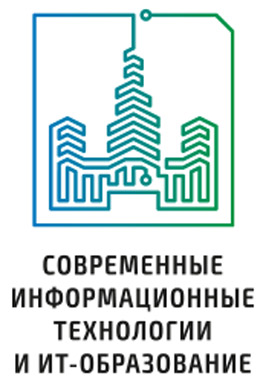Компенсация внешних возмущений в задаче визуального позиционирования мобильного робота
Аннотация
В работе рассматривается задача визуального позиционирования полноприводного мобильного омни-колесного робота относительно внешнего визуального маркера в виде квадрата, описываемого координатами четырех угловых точек. На корпусе робота жестко закреплена видеокамера. Управление роботом осуществляется путем задания силы тяги в продольном и нормальном направлениях, а также заданием вращающего момента. Задача заключается в том, чтобы проекция визуального маркера в плоскости изображения оказалось в желаемом положении, при этом задан ряд требований к динамике управляемого движения, в частности при наличии внешнего постоянного или периодического возмущения. Предлагаемое решение состоит в комбинации подходов управления с визуальной обратной связью и использования особого многоцелевого регулятора, который позволяет разбить изначально сложную задачи на более простые, которые могут решаться относительно независимо друг от друга. Приводится описание процесса синтеза такого регулятора для учета требований в различных режимах движения. Полученная обратная связь обеспечивает асимптотическую устойчивость, астатизм замкнутой системы по отношению к постоянному возмущению, а также минимизацию интенсивности реакции управляющего сигнала на полигармонические возмущения с известными частотами. Эффективность описанного подхода демонстрируется на примере экспериментов с компьютерной моделью мобильного робота в режиме собственного движения, при наличии постоянного внешнего возмущения и в случае полигармонического возмущения с тремя гармониками.
Литература
2. Chaumette F., Hutchinson S. Visual servo control. I. Basic approaches. IEEE Robotics & Automation Magazine. 2006;13(4):82-90. doi: https://doi.org/10.1109/MRA.2006.250573
3. Veremey E.I. Dynamical Correction of Positioning Control Laws. IFAC Proceedings Volumes. 2013;46(33):31-36. doi: https://doi.org/10.3182/20130918-4-JP-3022.00019
4. Oliviera H.P., Sousa A.J., Moreira A.P., Costa P.J. Dynamical Models for Omni-directional Robots with 3 and 4 Wheels. In: Proceedings of the Fifth International Conference on Informatics in Control, Automation and Robotics. Vol. 2: ICINCO. Funchal, Madeira, Portugal: INSTICC Press; 2008. p. 189-196. doi: https://doi.org/10.5220/0001489201890196
5. Carona R., Aguiar A.P., Gaspar J. Control of Unicycle Type Robots: Tracking, Path Following and Point Stabilization. In: Proceedings of JETC 2008 ‒ IV Jornadas de Engenharia Electronica e Telecomunicacoes e de Computadores. Lisbon, Portugal. Lisbon: ISEL; 2008. p. 180-185. Available at: https://welcome.isr.tecnico.ulisboa.pt/publications/control-of-unicycle-type-robots-tracking-path-following-and-point-stabilization (accessed 14.10.2022).
6. Ye C., Zhang J., Yu S., Ding G. Movement Performance Analysis of Mecanum Wheeled Omnidirectional Mobile Robot. In: 2019 IEEE International Conference on Mechatronics and Automation (ICMA). Tianjin, China: IEEE Computer Society; 2019. p. 1453-1458. doi: https://doi.org/10.1109/ICMA.2019.8816397
7. Leow Y.P., Low K.H., Loh W.K. Kinematic modelling and analysis of mobile robots with omni-directional wheels. In: 7th International Conference on Control, Automation, Robotics and Vision, 2002. ICARCV 2002. Vol. 2. Singapore: IEEE Computer Society; 2002. p. 820-825. doi: https://doi.org/10.1109/ICARCV.2002.1238528
8. Loh W.K., Low K.H., Leow Y.P. Mechatronics design and kinematic modelling of a singularityless omni-directional wheeled mobile robot. In: 2003 IEEE International Conference on Robotics and Automation (Cat. No.03CH37422). vol. 3. Taipei, Taiwan: IEEE Computer Society; 2003. p. 3237-3242. doi: https://doi.org/10.1109/ROBOT.2003.1242089
9. Chu B., Sung Y.W. Mechanical and electrical design about a mecanum wheeled omni-directional mobile robot. In: 2013 10th International Conference on Ubiquitous Robots and Ambient Intelligence (URAI). Jeju, Korea (South): IEEE Computer Society; 2013. p. 667-668. doi: https://doi.org/10.1109/URAI.2013.6677426
10. Tătar M.O., Popovici C., Mândru D., Ardelean I., Pleşa A. Design and development of an autonomous omni-directional mobile robot with Mecanum wheels. In: 2014 IEEE International Conference on Automation, Quality and Testing, Robotics. Cluj-Napoca, Romania: IEEE Computer Society; 2014. p. 1-6. doi: https://doi.org/10.1109/AQTR.2014.6857869
11. Han Y., Zhu Q. Robust Optimal Control of Omni-directional Mobile Robot using Model Predictive Control Method. In: 2019 Chinese Control Conference (CCC). Guangzhou, China: IEEE Computer Society; 2019. p. 4679-4684. doi: https://doi.org/10.23919/ChiCC.2019.8865344
12. Shang W., Zhu H., Pan Y., Li X., Zhang D. A Distributed Model Predictive Control for Multiple Mobile Robots with the Model Uncertainty. Discrete Dynamics in Nature and Society. 2021;2021:9923496. doi: https://doi.org/10.1155/2021/9923496
13. Kim N., Oh D., Oh J.-Y., Lee W. Disturbance-Observer-Based Dual-Position Feedback Controller for Precision Control of an Industrial Robot Arm. Actuators. 2022;11(12):375. doi: https://doi.org/10.3390/act11120375
14. Chen Y., Dong F. Robot machining: recent development and future research issues. The International Journal of Advanced Manufacturing Technology. 2013;66(9-12):1489-1497. doi: https://doi.org/10.1007/s00170-012-4433-4
15. Lee H. Trajectory Control of Robotic Manipulators: A Comparison Study. In: Proceedings of the ASME 2020 International Mechanical Engineering Congress and Exposition. Vol. 7A: Dynamics, Vibration, and Control. Virtual, Online. V07AT07A017. ASME; 2020. doi: https://doi.org/10.1115/IMECE2020-23964
16. Zeng K., et al. Trajectory tracking for a 3-DOF robot manipulator based on PSO and adaptive neuro-fuzzy inference system. In: 2016 35th Chinese Control Conference (CCC). Chengdu, China: IEEE Computer Society; 2016. p. 973-977. doi: https://doi.org/10.1109/ChiCC.2016.7553213
17. Sotnikova M.V., Veremey E.I. Algorithms for Motion Optimization on a Given Trajectory Taking into Account Weather Forecast and Constraints. IFAC-PapersOnLine. 2018;51(32):389-394. doi: https://doi.org/10.1016/j.ifacol.2018.11.415
18. Kumar J., Gupta D., Goyal V. Nonlinear PID Controller for Three-Link Robotic Manipulator System: A Comprehensive Approach. In: Proceedings of International Conference on Communication and Artificial Intelligence. Singapore: Springer; 2022. p. 137-152. doi: https://doi.org/10.1007/978-981-19-0976-4_12
19. Jangid M.K., Kumar S., Singh J. Trajectory tracking optimization and control of a three link robotic manipulator for application in casting. International Journal of Advanced Technology and Engineering Exploration. 2021;8(83):1255. doi: https://doi.org/10.19101/IJATEE.2021.874468
20. Hu W.F., et al. Intelligent robust control for three-link robot manipulator via sliding mode technology. In: 2007 IEEE 22nd International Symposium on Intelligent Control. Singapore: IEEE Computer Society; 2007. p. 499-504. doi: https://doi.org/10.1109/ISIC.2007.4450936
21. Mustafa M.M., Hamarash I., Crane C.D. Adaptive-Sliding Mode Trajectory Control of Robot Manipulators with Uncertainties. Zanco Journal of Pure and Applied Sciences. 2020;32(4):22-29. doi: https://doi.org/10.21271/ZJPAS.32.4.3
22. Cho H. On Robust Adaptive PD Control of Robot Manipulators. Journal of Applied and Computational Mechanics. 2020;6:1450-1466. doi: https://doi.org/10.22055/JACM.2020.35658.2707
23. Fan L., Joo E.M. Linear and nonlinear PD-type control of robotic manipulators for trajectory tracking. In: 2009 4th IEEE Conference on Industrial Electronics and Applications. Xi'an: IEEE Computer Society; 2009. p. 3442-3447. doi: https://doi.org/10.1109/ICIEA.2009.5138846
24. Corradini M.L., et al. Discrete time sliding mode control of robotic manipulators: Development and experimental validation. Control Engineering Practice. 2012;20(8):816-822. doi: https://doi.org/10.1016/j.conengprac.2012.04.005
25. Schlanbusch R., et al. PD+ based output feedback attitude control of rigid bodies. IEEE Transactions on Automatic Control. 2012; 57(8):2146-2152. (In Eng.) doi: https://doi.org/10.1109/TAC.2012.2183189

Это произведение доступно по лицензии Creative Commons «Attribution» («Атрибуция») 4.0 Всемирная.
Редакционная политика журнала основывается на традиционных этических принципах российской научной периодики и строится с учетом этических норм работы редакторов и издателей, закрепленных в Кодексе поведения и руководящих принципах наилучшей практики для редактора журнала (Code of Conduct and Best Practice Guidelines for Journal Editors) и Кодексе поведения для издателя журнала (Code of Conduct for Journal Publishers), разработанных Комитетом по публикационной этике - Committee on Publication Ethics (COPE). В процессе издательской деятельности редколлегия журнала руководствуется международными правилами охраны авторского права, нормами действующего законодательства РФ, международными издательскими стандартами и обязательной ссылке на первоисточник.
Журнал позволяет авторам сохранять авторское право без ограничений. Журнал позволяет авторам сохранить права на публикацию без ограничений.
Издательская политика в области авторского права и архивирования определяются «зеленым цветом» в базе данных SHERPA/RoMEO.
Все статьи распространяются на условиях лицензии Creative Commons «Attribution» («Атрибуция») 4.0 Всемирная, которая позволяет другим использовать, распространять, дополнять эту работу с обязательной ссылкой на оригинальную работу и публикацию в этом журналe.













